Essential Travel & Trail Tips for Telluride, Ouray, and Silverton
Plan now if you want to visit the San Juan Mountains this summer or fall
Happy spring! Later today, I host the monthly online meetup for paid subscribers. We’ll talk about recent races that several in the group ran, and then we’ll do a Q&A to address training questions. If you’d like to be part of this group conversation, plus receive occasional bonus posts, please consider upgrading your subscription to the supporter level.
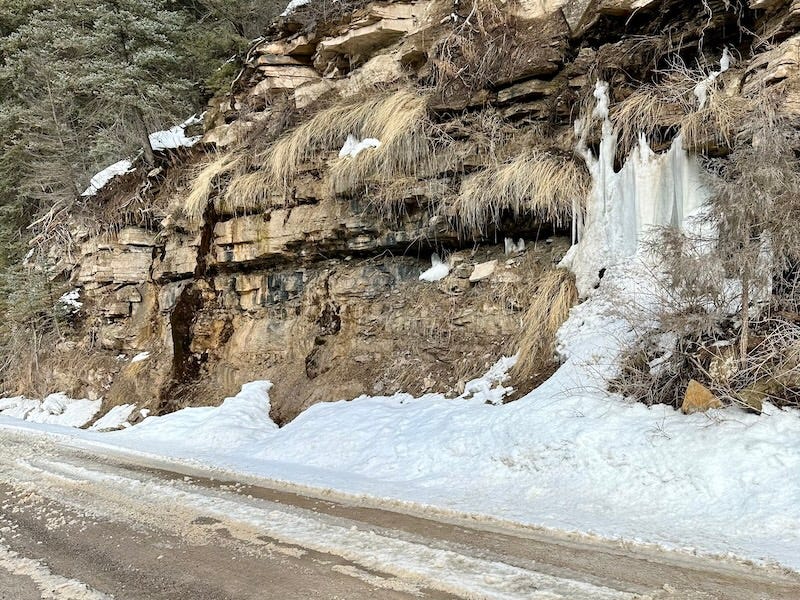
A personal update before the practical stuff
Folks, I’m brain dead and stretched thin this week. After finishing last week’s newsletter, I focused on a massive spring cleaning and moving project that had to be done in only two days. We moved all of our furnishings out of the house (oh my god—the dust, pet hair, and junk under the sofa!), and moved ourselves into a rental for the week, so that workers can repair and refinish our home’s damaged floors. The whole endeavor took more energy and felt more stressful than anticipated.
My run last weekend suffered from fatigue plus seasonal mud clinging and weighing down my shoes. I cut the 16-mile planned outing to 11 and let myself take more than the usual amount of hiking breaks on the uphills. I also skipped CrossFit for the week.
I was reminded (again) that when life turns stressful due to work, family, or illness, running should be a comforting break and feel restorative, not an added stressor. It’s really OK to deviate from your training plan and have a low-volume, low-intensity week or two as needed.
Now I’m trying to finish commitments and pack for a family vacation in the coming week. I know, these are nice, privileged problems to have—home repair plus vacation planning. I’m not complaining, just explaining! We’re going on an eight-day family trip abroad.
I honestly don’t know if I’ll write next week’s newsletter or skip it. If I skip it, it’s because I’m trying to have a real vacation. But something may inspire me to write.
The above is a prelude to explain this week’s practical, info-heavy post. My headspace is not in a mode to write a thoughtful descriptive narrative. I just want to share some timely advice.
Read on for some travel tips and training links.
So, you want to experience the San Juan Mountains and Telluride/Ouray/Silverton
A new subscriber messaged me that she’s coming to Telluride for a wedding, and do I have any advice on trails to run? I get this question all the time! This post is my answer.
With summer approaching, now is the time to make plans and reservations if you’re planning to visit southwest Colorado, especially Telluride and its surrounding towns.
When to visit
June and July are the best times to explore the San Juan Mountains and its towns. Wildflowers bloom abundantly, waterfalls cascade fully, and grass looks its greenest. By August through September, the landscape is drying out, flowers are past their prime, and sadly, smoke from wildfires in the West often obscures the mountains. Late September to early October is the peak period to catch the gorgeous golden colors as the aspens turn.
The area has two “shoulder seasons” that are blissfully less crowded and less expensive, but also less scenic in terms of foliage: mid-April to mid-May and November. During these off seasons, many restaurants close, and Telluride’s gondola shuts down.
I recommend avoiding Telluride during its most crowded festivals (unless you want to attend the festival), especially Bluegrass June 20 - 23. It’s nearly impossible to get into and around town. I am in the minority locally in that I am not a festival-goer and don’t like the music and film fests and all the crowds they bring. The only exception is Mountainfilm, which I attend and highly recommend, on Memorial Weekend in late May. Check out this calendar for other events that happen throughout the year in the Telluride area.
Where to stay or camp
If you want to visit my hometown of Telluride, you’ll have to make a choice regarding lodging: Town or Mountain Village. Town is the historic downtown surrounded by the stunning box canyon. Mountain Village is the ski resort above town, developed in the 1980s and ’90s, with a village core and a lot of high-density condos and hotels. A free gondola connects the two, so it’s easy to go between them. I am partial to the vibe and history of town, but lodging is more plentiful up in Mountain Village.
Regardless which you choose, you’ll discover that any lodging is ridiculously expensive during peak summer times and usually requires a three- or even four-night minimum, so you may say screw it, let’s camp or stay elsewhere. That would probably be my reaction if I didn’t live here.
The paid campground in Town Park is most convenient for being in town, but fills up quickly, especially around festivals, so reserve a spot as soon as they become available. This link shows when the booking windows open (first one is April 1), and they sell out within minutes. The Mary E Campground on Ilium Road about four miles from town is a nearby option.
The closest dispersed camping to town is up Mill Creek Road across from the Shell Station on the way to town; you can find a few spots to park and camp. But I would recommend driving a bit farther south on Highway 145 and check out the campgrounds called Sunshine, Matterhorn, or Priest Lake; or find a spot next to gorgeous Alta Lake up Alta Lake Road; or, more remote but beautiful, the dispersed spots along Hope Lake Road next to Trout Lake.
Aside from Telluride, I highly recommend staying in the town of Ouray. The motels and rentals are more affordable, and the trail options are plentiful (you easily can hop on the Ouray 100 or Hardrock 100 routes from town). The town of Ridgway in between Telluride and Ouray is another good option, but you have to drive to get to trailheads.
And then there’s Silverton—the epicenter for Hardrock. I love Silverton and have stayed in several of its funky old motels the night before a race there. Camping next to Mineral Creek or Molas Lake are good options.
Bottom line: If you’re visiting the region, you can’t go wrong visiting all three towns of Telluride, Ouray, and Silverton. It’s hard to pick just one. Drive time from Telluride to Silverton is about two hours; Ouray, roughly in the middle, is 45 minutes to Silverton and an hour to Telluride.
If you want to stay in a rustic backcountry lodge high up in the mountains between Telluride and Silverton, check out the Opus Hut. It’s my favorite.
To get here, I recommend flying into the Montrose regional airport if you’re going to Ouray or Telluride, or Durango’s airport if you’re going to Silverton. You can book a ride on the Telluride Express shuttle to get to and from Montrose. Telluride has an airport very close to my house, but I rarely fly in and out of it because the flights are quite limited (and expensive) and unreliable due to weather. There’s a decent chance if you fly into Telluride, you’ll get diverted and stuck at a regional airport.
Where to run and hike
When you arrive to this high-altitude environment, you’ll need to acclimate and let yourself downshift to hiking during your runs. Mountain “running” invariably involves a lot of hiking in the alpine terrain. It’s wise to run a few easier, flatter routes before venturing to and above treeline (which is around 11,500 feet elevation).
Use any trail app or Google maps to find the routes below.
Runnable routes are limited because most trails switchback up the steep mountains. The best relatively flat places to run steadily in Telluride are the Valley Floor (the expanse of protected open space on the way to town, with a lovely trail bisecting it); the river path east from Town Park to Bridalveil Road; the Galloping Goose trail (described in the second half of this post); or the river path down valley, which you can access at Silver Pick Road. In Ouray, you can pick up County Road 17 and run out and back toward Ridgway. In Silverton, County Road 2 is the best place for a steady out-and-back.
For singletrack trail routes, I recommend downloading the map for any of the trail races listed below and choosing some of their segments. My favorite Telluride-area trails that are not part of these races include:
Sneffels Highline, a gorgeous, tough U-shaped route, about 12 miles if you loop it by connecting the two ends with the Mill Waterline Trail. I recommend doing this route west to east—starting at the trail intersection with Deep Creek Trail. There is a saddle above 12,000 feet about two-thirds of the way through the route in this direction, and I prefer ascending rather than descending this west side of the saddle because of the loose talus rock. However, if you’re extra slow or get a late start, it may be wise to do the trail east to west (starting on the east side’s intersection with the Jud Weibe Trail), so that you get over the saddle—the high point—earlier in the day before afternoon thunderstorms threaten.
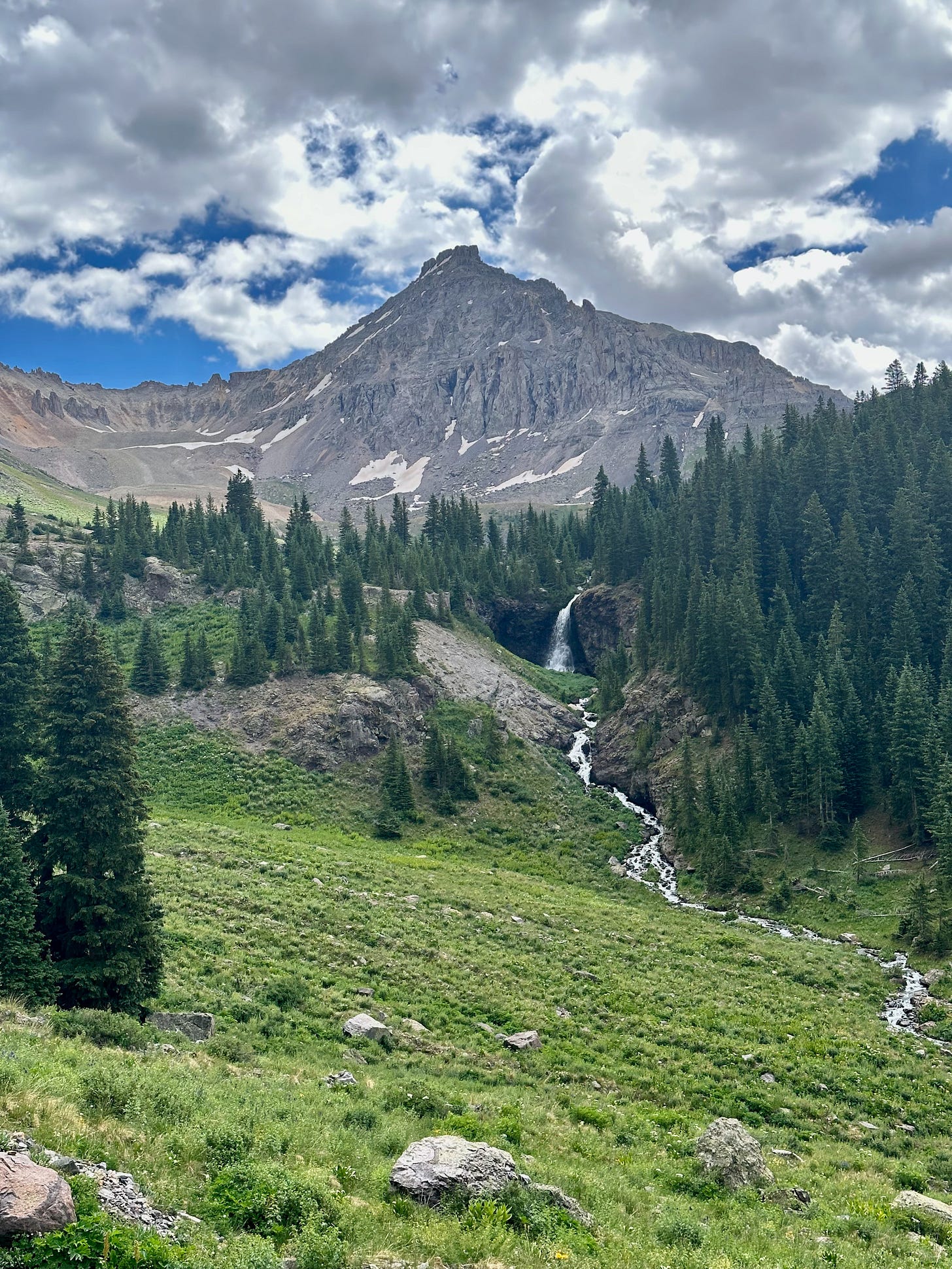
Lizard Head-Cross Mountain loop: This beautiful route (approximately 12 miles if you loop it), south of Telluride, rises above Trout Lake and shows the side views of the Wilsons (Wilson Peak and Mount Wilson—two 14ers whose similar names cause chronic confusion among visitors). Pick up the Lizard Head Trail along Highway 145 and start the loop counter-clockwise, and after a few miles you’ll be on the ridge of Black Face Mountain. (This out-and-back is plenty for many.) Continue on and skirt the chimney-like Lizard Head peak, then descend on Cross Mountain Trail. You’ll end up at another trailhead. To get back to the first trailhead, run the old railroad path next to the highway connecting the two, just under 2 miles.
Trout Lake to Hope Lake out and back: I like parking at Trout Lake, south of Telluride, and running the dirt road to the Hope Lake trailhead, because it provides about 3.5 miles of runnable dirt road before technical singletrack. Or you can drive Trout Lake Road to the end of Hope Lake Road and start hiking/running from the trailhead there. In any case, the technical, steep 2.25 miles from the trailhead to beautiful Hope Lake are well worth it. It’s a popular, at times crowded trail however, so get an early start. If you’re adventurous, continue on the trail above Hope Lake, over the ridge, and make your way toward Mineral Creek by Silverton.
Columbine Lake above Silverton: This out-and-back, about 8 miles round trip, starts at a trailhead just off Ophir Pass Road near Silverton and traverses spongy alpine tundra to reach a lake with an otherworldly blue. Go in the morning, when the sky is clear; you do not want to be on the exposed stretch during an electrical storm. You also can access Columbine Lake from the Opus Hut.
I love and recommend the following races—any part of them makes a good run or day hike.
The only exceptions are the Imogene Pass route, the Silverton Alpine Marathon route, or the road parts of the Ouray 100 route, because they follow old mining roads rather than singletrack. While they’re great to run and hike, they also attract a lot of OHV drivers and dirt bike riders midday, so if you want to avoid the noise and dust of vehicles, think twice about those routes.
Rundola 4th of July hill climb, July 4. This hypoxia-inducing ascent on a ski slope is only approximately 1.3 miles long, from the base of Telluride’s gondola to the gondola station overlooking town, but it gains 1800 feet. It should be called the “Hikedola.” I love this annual tradition, which raises money for the Telluride Foundation, and I just did the winter version, the “Skidola,” last week.
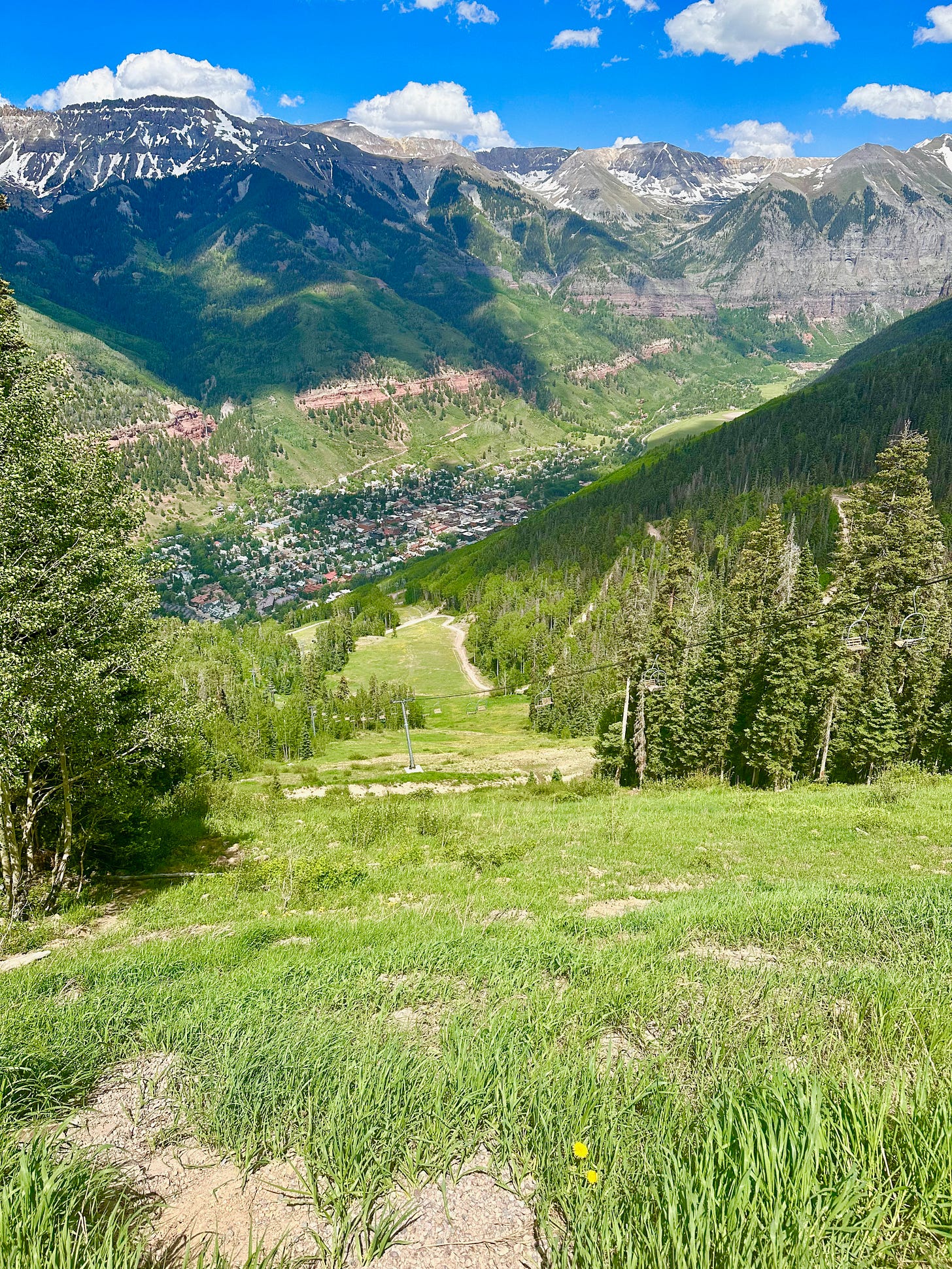
Silverton Alpine 50K/marathon/8M and Kendall Mountain 12M double, July 6 and 7. Aravaipa Running hosts these Silverton races on the weekend before Hardrock and offers a prize to those who complete the back-to-back challenge. I love both these races and did the double last July.
Hardrock 100, July 12. Search this newsletter’s archives, and you’ll find I’ve written volumes about this iconic mountain ultra. I’ve been trying for nine years to get a spot through its lottery and still am waiting on the sidelines like thousands of others who want to run it. Meanwhile, I run portions of it for training. This July, I’ll volunteer, crew for Yitka Winn, and pace the Ouray to Animus Forks portion with her.
Ouray 100, July 19. Unlike the Hardrock 100, which follows a massive loop, the Ouray 100 course has two main spines (Camp Bird Road and Highway 550) with a lot of out-and-back spurs to tag or loop around peaks. It is next-level crazy, with more vert than Hardrock (nearly 42,000 feet of gain compared to Hardrock’s 33,000). Very little of it is runnable. Weather conditions tend to be biblical. I DNFed it at mile 66 in 2018, which still stings.
Box Canyon 30K and 10M, July 20. This race is a great little taste of the Hardrock route next to Telluride, up and down the Wasatch Basin.
Telluride Mountain Run, Aug. 24, with 13, 24, and 40-mile options. As gnarly as Hardrock, just shorter. One of my favorite races; see my 2023 report.
Imogene Pass Run, Sept. 7, 17 miles from Ouray to Telluride point to point. This is a classic race that sells out within minutes.
Ouray 50, Sept. 14. See Ouray 100 above; this covers the second half of it.
Ouray Mountain Trail Race half marathon, Sept. 21. This sweet little locals’ race provides a wonderful tour of Ouray’s Perimeter Trail and some of its spurs. It’s tough but manageable.
Deep Creek Half Marathon, Sept. 28. This race runs right by my house and is my favorite “backyard” route! It starts at the Telluride Airport and runs the Deep Creek Trail to Jud Weibe Trail to town. It stays below tree line, with a net downhill (but still is quite tough), and showcases the golden fall colors.
Remember, “anything can happen in the mountains,” as I write in this archived post with safety essentials. Read it for safety precautions to take before venturing on the trails listed above.
Spring training tips
Feeling motivated by those routes and races? Here are five archived posts with basic training advice:
Carnage at Canyonlands Ultra (aka how to prevent a DNF)
One more race to mention
Last week’s post on the Lululemon Further event generated a lot of strong feelings. Many people commented publicly, or messaged me privately, to express appreciation that I looked at the event with a critical eye, especially how it overlooked mothers and older women. Others were upset that I didn’t fully applaud an event that did so much to support the participants and that aimed to uplift women.
In any case, I predicted that the event would inspire followers to run a similar loop course to see how far they can go. Well, that’s true for me! The Further spectacle made me wax nostalgic about the two times I ran a 24-hour ultra on a flat one-mile loop at San Francisco’s Crissy Field (both times getting to 115 miles).
As fate would have it, Gnar Runners—a race-directing group in Northern Colorado that puts on Never Summer 100K, which I’m running in July—announced a new race last week, and it’s a timed ultra with a flat one-mile loop. Their Colorado 24-Hour Run (also featuring 6- and 12-hour divisions) will take place November 2 - 3 in Fort Collins. I’m in!

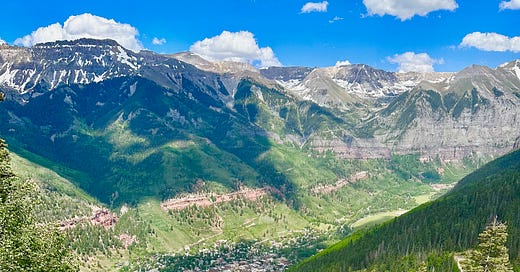

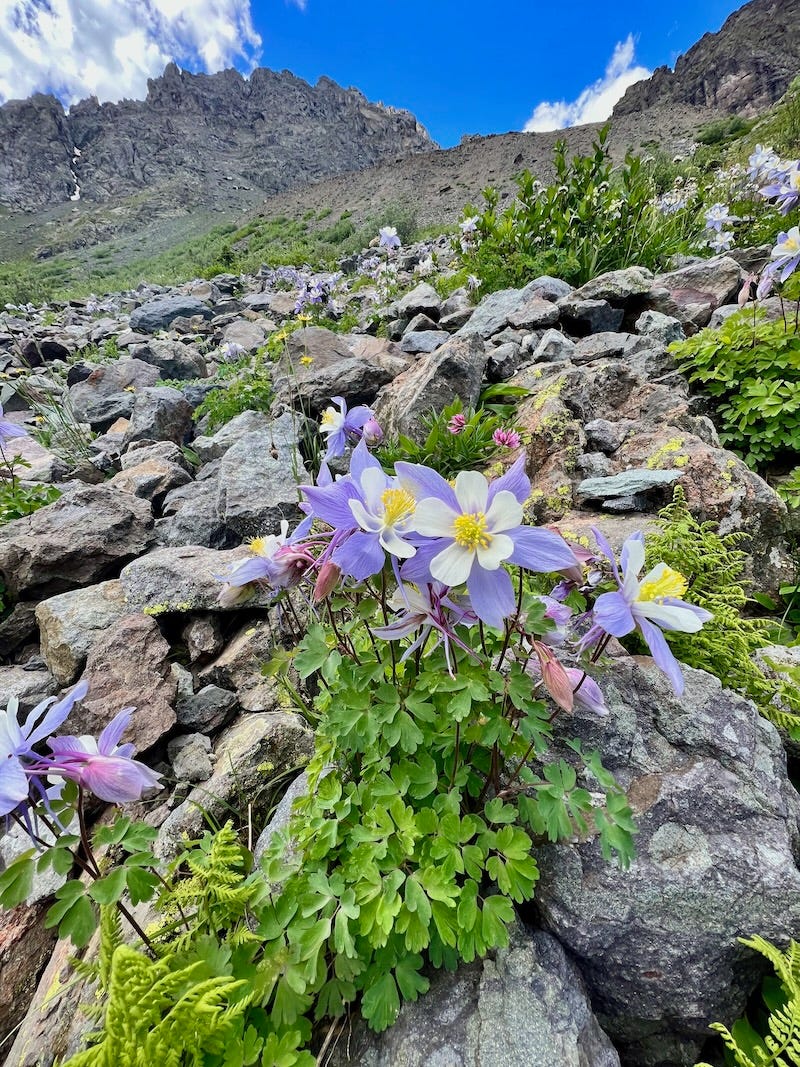
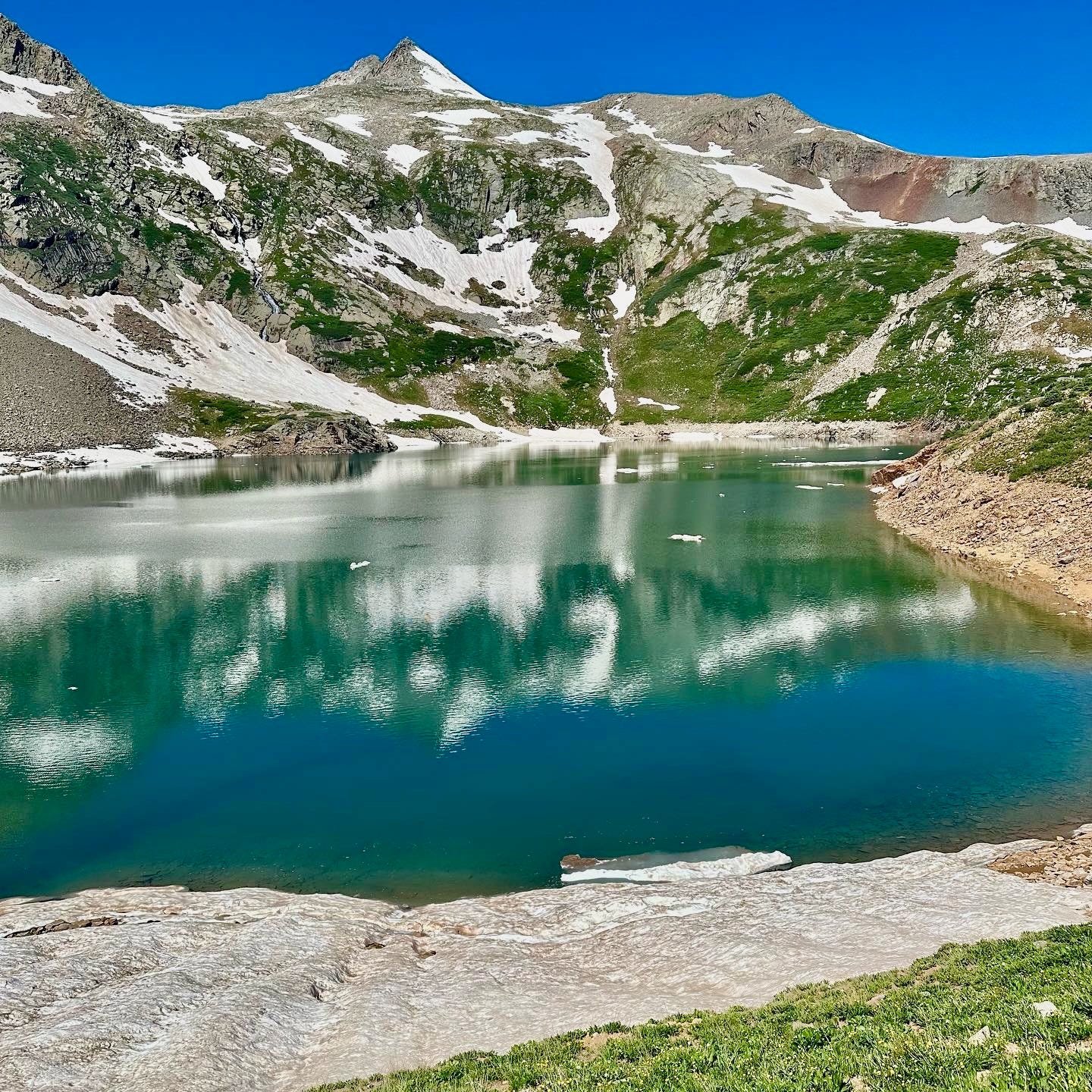
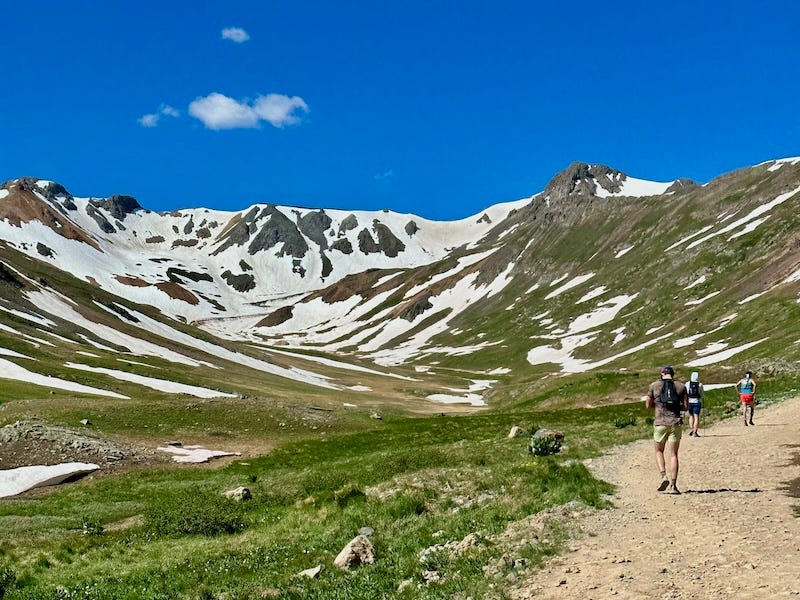
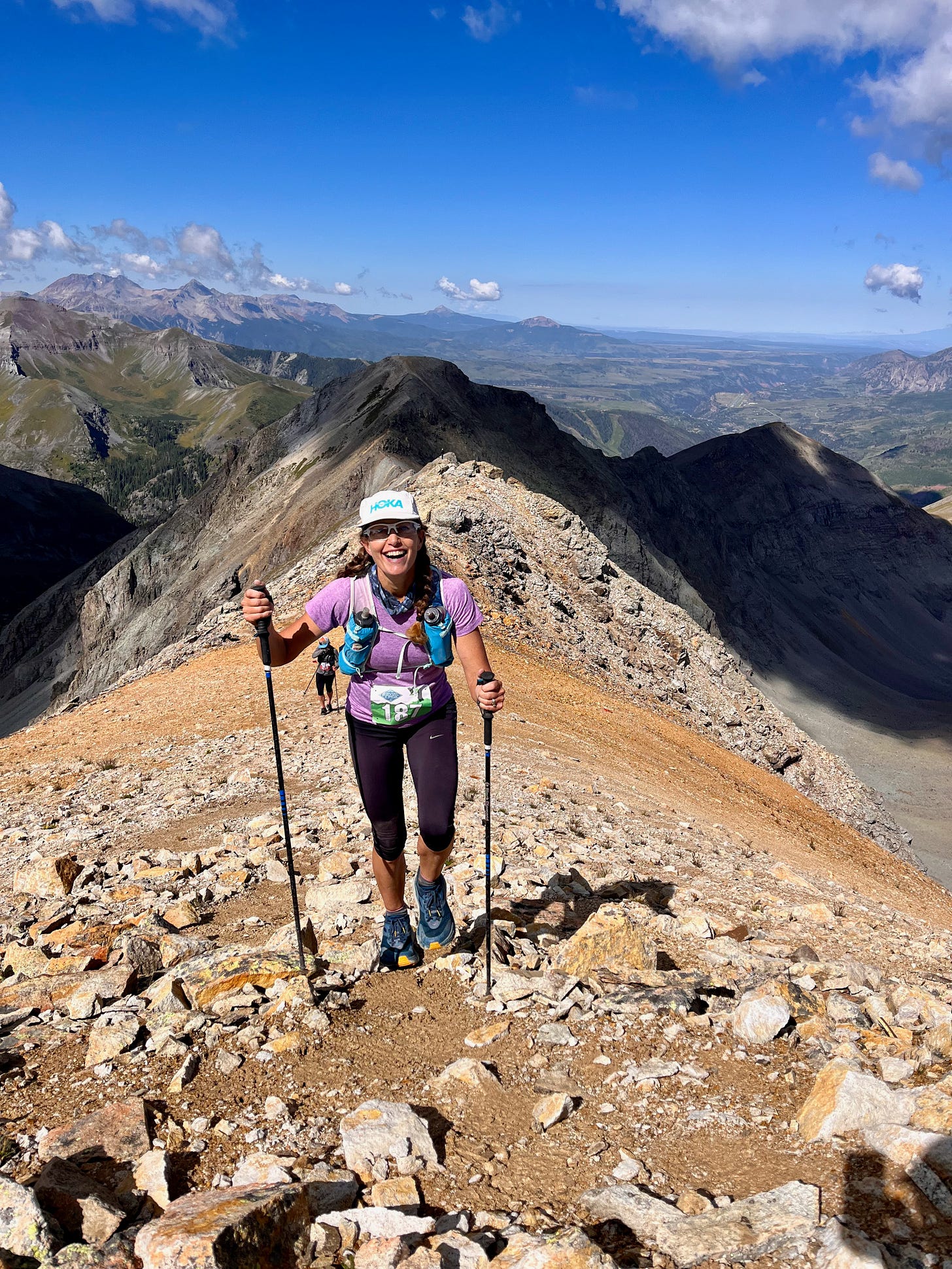
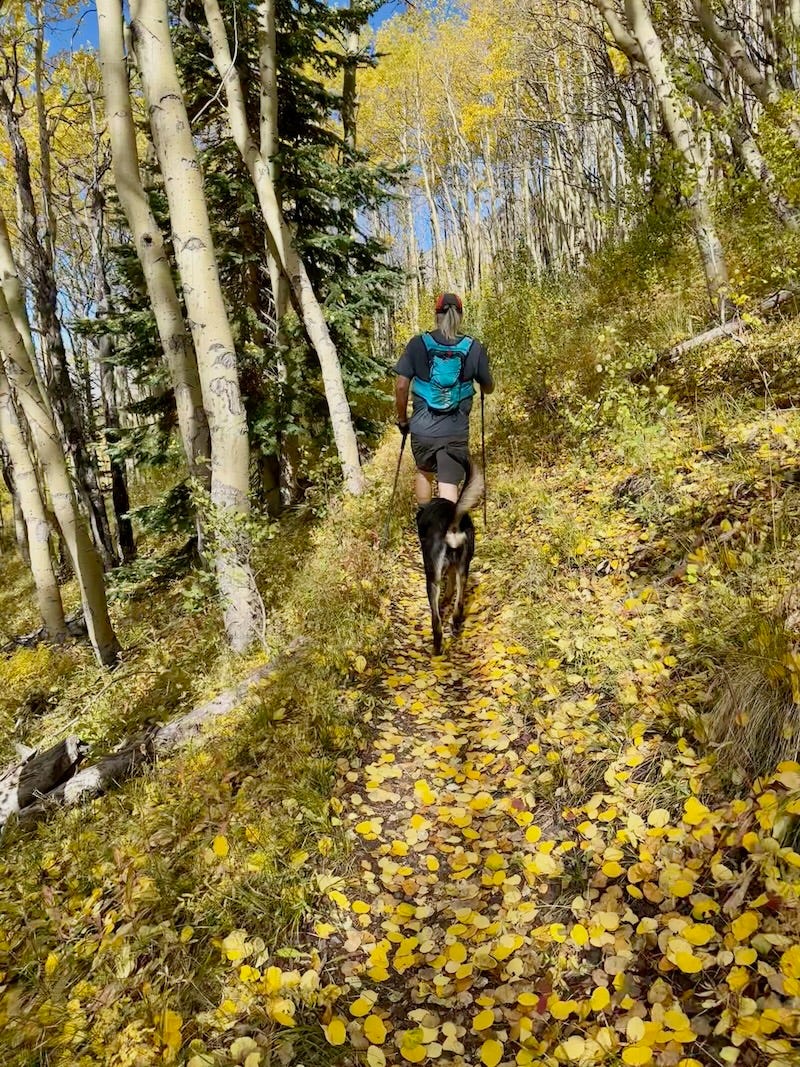
Hi Sarah,
This one has been a roller coaster ride for me. At first I was like, WTF? no Lake City? And then I was like, that’s OK cuz we don’t need more promotion. And then I was like, but wait, these are the type of people that we need to be attracting, not OHVers. So how about a little love for Lake City? Are we the red headed step child of the San Juan?Help us offset the OHV push. 5 fourteeners within 15 miles of down town Lake City! Hinsdale County 96% public land and over half of that designated Wilderness. More contiguous tundra than any county south of the Alaska. We have an exceptional percentage of ultra runners for this small year round community of 300-350 with a dozen registered this year and many many prior finishers.
Have you seen our ice climbing scene this winter? We have much to offer to the human powered sports and pastimes. We need more counterbalance to the motorized crowd.
I love your writing. You inspire me to do my own.
Jerry
This is so helpful! We love Telluride and are coming back this summer. Bookmarking this post so I can refer to it again and again. Thanks!